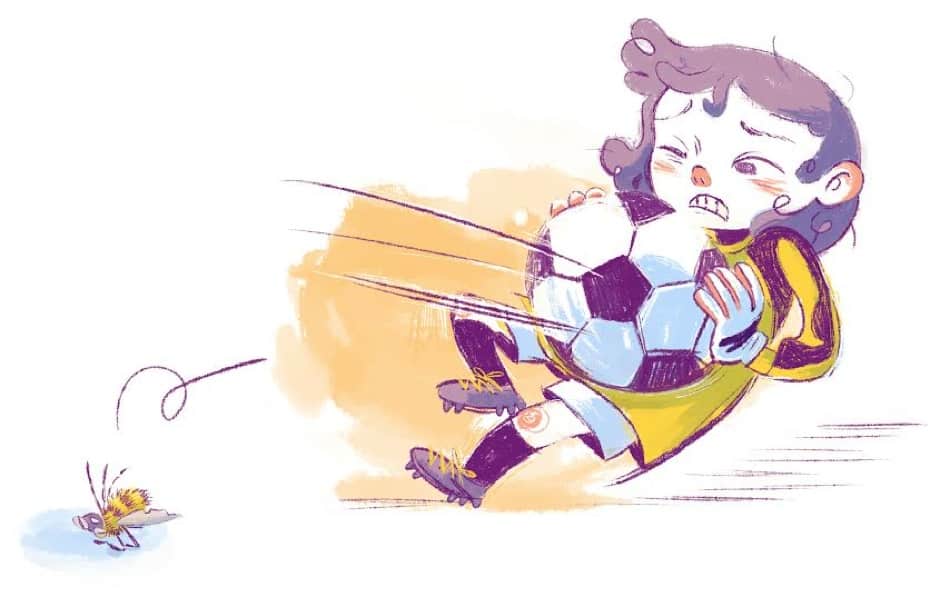Black and yellow
At 10 years old, my priorities in life consisted of three things: checking my Neopets account, pestering my siblings, and soccer. To me, there was nothing better than running around with 11 other kids who had the same basic grasp of the sport.
Every game, we would rotate on who would put on the yellow and black striped goalie shirt and stand terrified for 60 minutes. When my day rolled around I accepted my fate and changed into the long-sleeved shirt in 40-degree weather. As I stood in the penalty box I felt a burning pain in my stomach, which at the time I thought was dread. In reality, a large bumblebee managed to get under the shirt as I had pulled it on and sacrificed itself attempting to escape.
Because I had never been stung before, my reaction was half flailing and half screaming. As the other team suddenly had a breakaway, I only hoped my defenders were half as good as their parents thought they were. They weren’t. A kick and a howl later, I opened my eyes and saw I was holding a soccer ball, my dad and coach were clapping, and a dead bee had fallen out of my jersey.
— Sarah Luttrell
Hoop dreams at the neighborhood park
Summertime marked the end of indoor basketball and the start of outdoor play. There were two full-court outdoor basketball surfaces parallel to each other at a park a short walk from my house. These two basketball courts, however, were not just any courts—they were symbolic of the division between the older kids and the younger kids, the elite and the adequate, and the revered and the unproven. It was much like the system being espoused in the NBA and its affiliate D-league, and the MLB majors and minors.
Everyone was aware of the hierarchy of basketball literacy that took place in each court, but of course, as kids, we had a rather simplified understanding: the other kids were good, or they sucked. The younger, less skilled kids were especially mindful of this division. Each one of us was eager to take our talents — to echo LeBron James — to the south of our court.
As a result of an older kid’s absence, I was fortunate enough to be picked to play at the court where the older, more skilled kids played. Although I did not score or perform productively, what I took away was the lesson of hard work and perseverance. I worked tirelessly on my jump-shooting and dribbling, and a few months later, I was a regular participant at the older, more skilled court.
— Arco Recto
The time I didn’t break a wooden board
When I first joined karate, I envisioned being Xena the warrior princess and making all the snotty-nosed boys in my sixth grade class tremble with fear. I bragged when I graduated to an orange belt within the first year, letting everyone know that I was going to break a board with a single punch.
When board-breaking day came, however, I got nervous when I noticed that I had the smallest hands in the class. Disheartened by my perceived weakness, my fist barely hit the board leaving no sign of damage. The sensei ordered me to give it another shot with all my strength. Upon impact, a small fissure ran up the middle of the wood. The sensei had to finish the job by cracking the board over his knee.
Disappointed, I stormed off in a huff. I was intercepted by a black belt and, like a moment from Karate Kid, he wisely reminded me that the point of the exercise wasn’t to be the strongest, but to demonstrate the power of discipline.
At 12, I was not receptive to this message, but over time, it has had a lasting impression. I have realized that it wasn’t my small hands that prevented me from being a warrior princess — it was my lack of self-belief and focus. I moved on from karate and later took up rugby. Even though I have never been the strongest player on a team, I try to let my focus and discipline dictate my worth as an athlete and as a person. Plus, to this day, I can still do a mighty fine roundhouse kick.
— India McAlister


